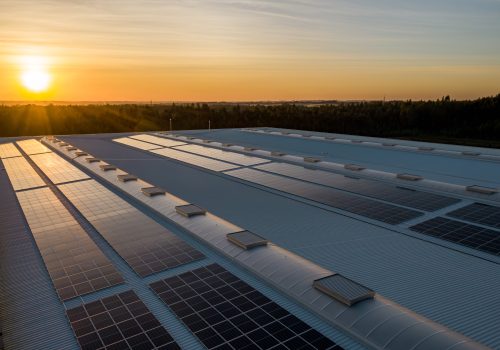The Inflation Reduction Act of 2022 will soon be law, and it is a massive step for US climate ambitions, bringing $369 billion for climate solutions. In particular, carbon removal will get a big lift.
Carbon removal experts and startups are rushing to prepare for this new wave of funding, which will test if technologies can deliver on their ambitions. Carbon removal startups aspire to take out billions of tons of CO2 from the air each year. With the new legislation, the United States can deploy policies and technologies to accelerate the sector. But these tools do not guarantee carbon removal will succeed.
Cost and supply hampered carbon removal in the past. Permanently removing a ton of CO2 from the air today can cost over $500, and there are not enough facilities to meet demand from the voluntary market. Plus, most technologies have low Technology Readiness Levels, like direct air capture and enhanced weathering. This is changing. The bill increases the tax credit for permanent carbon removal (45Q) from $50 to $180 per ton using direct air capture, and lowers how much CO2 a facility must remove to qualify from 100,000 tons to 1,000 tons. With this new legislation, companies have room to develop their technologies at lower costs and work towards gigaton-scale removal.
But barriers remain between the bill’s provisions and widespread deployment and demand. For one, taxpayers question whether the United States should spend money on carbon removal instead of renewable energy or adaptation, although the Intergovernmental Panel on Climate Change stated that carbon removal is necessary to limit global warming to 1.5°C. (Carbon removal takes CO2 out of the air and permanently stores it, while point-source carbon capture traps CO2 from a power plant or industrial facility before it is released into the atmosphere.)
Carbon removal facilities also use resources like energy and water, and organizations fear it will divert attention from cutting emissions. However, there are opportunities to collaborate. Some carbon removal technologies use renewable energy and recycle brackish water in their process, which could aid the development of renewable energy in rural areas and provide a source of clean water. Facilities could also generate revenue for resilience and adaptation in areas affected by climate change. Policymakers and businesses should help build out the synergies between carbon removal and other climate solutions.
Policy and financial support must be paired with dialogue between policymakers, businesses, and communities. Communities and policymakers need to understand how carbon removal technologies work and why removing carbon from the atmosphere could help avoid the worst climate change impacts. Transparency with communities is key to deciding what infrastructure should be built for carbon removal and how to ensure carbon is safely and permanently stored. The Department of Energy developed Community Benefit Agreements for community groups and developers to legally agree on benefits in exchange for support of a project. This framework ensures all stakeholders gain, and is a strong model going forward. Without informing and incorporating feedback from the public, facilities will be difficult to build and carbon removal will face an uphill battle to scale, regardless of tax incentives.
Tax credits also do not guarantee carbon removal will be efficient or effective. Policy changes like a technology-neutral 45Q tax credit could expand the market by allowing novel technologies to participate beyond direct air capture and point-source methods, an update to the language since approved by the Congress in 2008. Using “sticks” —like a price on carbon—instead of “carrots” like tax credits could accelerate deployment by ensuring future demand for carbon removal. These changes could support a range of carbon removal solutions, driving down costs and allowing flexibility as technologies improve.
In addition, scaling to gigatons of removals in the United States requires a framework to ensure demand for millions or billions of tons of carbon if the voluntary market wanes, whether at the federal or global level. States or the federal government could pledge funds alongside private sector commitments to procure high-quality carbon removals and zero out emissions by 2050. An international body could follow suit, funded by the countries responsible for most global emissions—China, the European Union, and the United States. Policymakers must ensure carbon removal accompanies a decrease in fossil fuel use and not business as usual.
The Inflation Reduction Act incentives could overcome the first-mover problem. If the bill can create a thriving carbon removal sector in the United States, the European Union or China could respond by including technological carbon removal in Emissions Trading Systems. Countries could pledge to be carbon-negative instead of net-zero at future COP climate conferences. Buy-in from businesses and governments could help build facilities around the world and ensure carbon removal is not simply a luxury for developed countries but brings benefits for the communities most affected by climate change.
Efficient policies and technologies are necessary to reach gigaton-level carbon removal and help avert the worst impacts of climate change. It will take time to improve technologies, increase their scale, and see the effects on climate change. The Inflation Reduction Act lays the groundwork—now will come the test.
Calli Obern is a member of this year’s Women Leaders in Energy and Climate Fellowship at the Atlantic Council. She is director of policy at Capture6, a carbon removal startup.
Meet the author
Related content
Learn more about the Global Energy Center

The Global Energy Center develops and promotes pragmatic and nonpartisan policy solutions designed to advance global energy security, enhance economic opportunity, and accelerate pathways to net-zero emissions.





